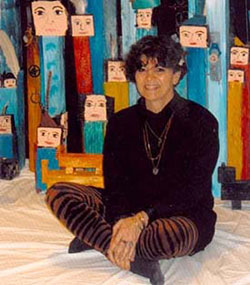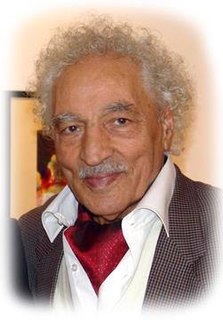 W
WDia Al-Azzawi is an Iraqi painter and sculptor, now living and working in London and one of the pioneers of modern Arab art. He is noted for incorporating Arabic script into his paintings. Active in the arts community, he founded the Iraqi art group known as New Vision and has been an inspiration to a generation of young, calligraffiti artists.
 W
WHashem Muhammad al-Baghdadi (1917-1973) was an Iraqi master calligrapher, noted for his lettering which exhibited a steadiness of hand and fluidity of movement. In his later life, he was acknowledged as the "imam of calligraphy" across the Arab world, and would be the last of the classical calligraphers. He also authored several important texts on the art of calligraphy.
 W
WHassan Massoudy, born in 1944, is an Iraqi painter and calligrapher, considered by the French writer Michel Tournier as the "greatest living calligrapher", currently lives in Paris. His work has influenced a generation of calligraffiti artists.
 W
WHusain Ar-Radi, also known as Hashiim, 'Ammar, and Salam Adil, was an Iraqi communist politician as well as a poet and painter. He was the leader of the Iraqi Communist Party from 1955 until his death by execution or under torture after the Baathist coup in 1963.
 W
WNuha al-Radi was an Iraqi diarist, ceramicist and painter and noted author of the Baghdad Diaries which vividly recounts the horror of living through the first Gulf War.
 W
WAbdul Qadir Al Rassam, عبد القادر الرسام), 1952 - 1882), was born in Baghdad, Iraq and is one of the first generation of Iraqi artists to study abroad and paint in the European style. He was influential in terms of introducing local audiences to European art. He is noted for his portraits and landscapes, painted in the Realist style.
 W
WNoori al-Rawi (1925-2014) was an Iraqi painter; a pioneer of Iraqi art who played an important role in shaping the Iraqi modern art movement through his roles as a practising artist, author, television presenter, art administrator and art critic.
 W
WShakir Hassan Al Said (1925–2004), an Iraqi painter, sculptor and writer, is considered one of Iraq's most innovative and influential artists. An artist, philosopher, art critic and art historian, he was actively involved in the formation of two important art groups that influenced the direction of post-colonial art in Iraq. He, and the art groups in which he was involved, shaped the modern Iraqi art movement and bridged the gap between modernity and heritage. His theories charted a new Arabic art aesthetic which allowed for valuations of regional art through lenses that were uniquely Arabic rather than Western.
 W
WNaziha Salim was an Iraqi artist, educator and author, described by the country's president, Jalal Talabani, as "the first Iraqi woman who anchored the pillars of Iraqi contemporary art".
 W
WJewad Selim (1919–1961) was an Iraqi painter and sculptor born in Ankara (Turkey) in 1919. He became an influential artist through his involvement with the Iraqi Baghdad Modern Art Group, which encouraged artists to explore techniques that combined both Arab heritage and modern art forms. He is considered to be one of Iraq's greatest 20th-century sculptors.
 W
WLorna Selim is an English artist and art teacher, who married a prominent Iraqi sculptor and relocated to Baghdad in 1950. She is a practising artist and contributed to the arts community in Iraq through her exhibitions, teaching and active participation in arts groups for twenty years. After her husband's premature death in 1961, she was part of the team responsible for completing his iconic monumental work, Nasb al-Hurriyah.